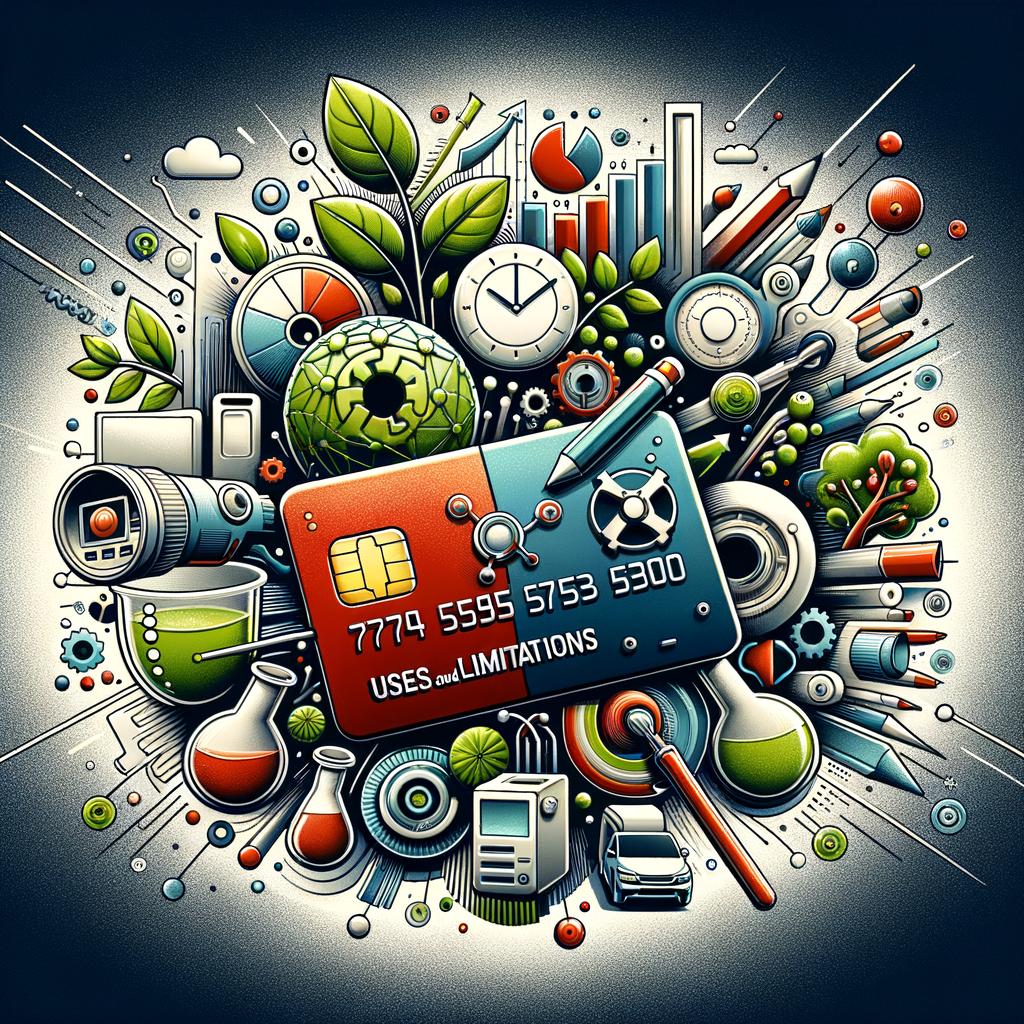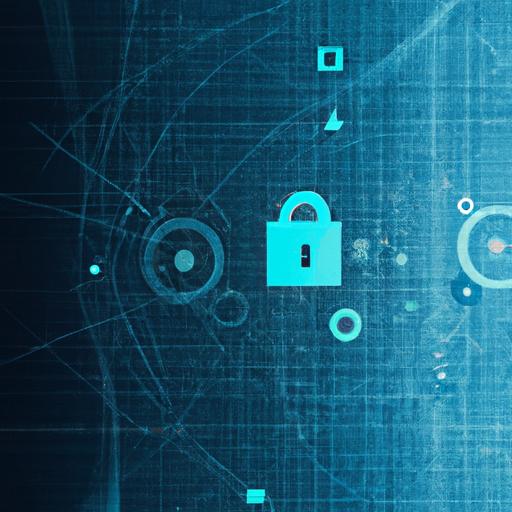Card Security and Fraud Prevention:
Card Security and Fraud Prevention: Information on security measures, fraud detection, and prevention techniques in card processing.
In the vast realm of e-commerce, where the virtual world meets cold, hard cash, exist some cunning creatures – the fraudsters. These nefarious beings prowl the dark corners of the internet, waiting for their next unsuspecting victim. But fear not, fellow web warriors! With a little know-how and a pinch of common sense, you can arm yourself with fraud prevention tips that will have these villains shaking in their virtual boots.
First and foremost, let’s talk passwords. We’ve all been guilty of using “password123” at one point or another, right? Well, it’s time to up our game. When creating passwords, we must think like magicians: the more complex, the better. Mix uppercase and lowercase letters, throw in some numbers and symbols, and voilà – you’ve got yourself a strong password that will flummox even the craftiest of hackers.
Now, let’s delve into the treacherous land of phishing emails. These deceitful missives, adorned with shining “deals” and “opportunities,” lurk in our inboxes, just waiting for us to take the bait. Remember, my friends, always be skeptical. If an email seems too good to be true, it probably is. Hover over links to see where they lead before you click, and remain vigilant. Your wallet will thank you.
Next up, let’s talk about that tiny padlock symbol we often overlook. When making an online purchase, always check for the padlock in your browser’s address bar. This little icon signifies that your connection is secure, encrypting your sensitive data from prying eyes. It’s like a superhero cape for your credit card information. So go ahead, don your virtual cape with confidence!
Another cardinal rule for e-commerce safety is to keep your software up to date. Just as you wouldn’t leave a back door unlocked, you shouldn’t leave vulnerabilities in your virtual fortress. Software updates often provide crucial security patches, sealing any loopholes lurking in the shadows. So, embrace those updates like a tech-savvy warrior, keeping your website armor impenetrable.
Of course, what article about fraud prevention would be complete without mentioning that ever-elusive beast – encryption. You’ve heard the term before, but what does it actually mean? Well, think of it as a secret language that only you and the recipient can speak. By encrypting your data, you’re ensuring that sensitive information like credit card details or personal addresses remain hidden from the prying eyes of cybercriminals. So, make sure your website has an SSL certificate, and watch those fraudsters flee in terror.
Lastly, but perhaps most importantly, be a skeptical consumer. Just as you wouldn’t buy a bridge from a stranger, don’t trust every website that comes your way. Research the seller, read reviews, and trust your gut. If something feels off, don’t proceed. Remember: you hold the power in this virtual world, so wield it wisely.
In conclusion, my fellow e-commerce enthusiasts, practice these fraud prevention tips, and you’ll be a force to be reckoned with. Stay tenacious, stay informed, and stay safe out there in the wild west of e-commerce. Together, we can send those fraudsters running, tails between their legs. Happy shopping, my brave web warriors!
Understanding and Preventing Credit Card Fraud in Online Transactions: Protecting Your Digital Dough!
We live in a digital age, where our every whim can be satisfied with a simple click of a button – be it purchasing your favorite sneakers or booking a dream getaway. Online transactions have made life a breeze, but they’ve also given rise to a notorious gang of digital thieves – credit card fraudsters! Don’t worry though, my friend, for I have got you covered! In this article, we’ll delve deep into the world of credit card fraud in online transactions, arm you with knowledge, and equip you with some kick-ass preventive measures. So, let’s bust these cyber-criminals like true online superheroes!
First things first, let’s get down to the nitty-gritty of how credit card fraud actually happens. The most popular technique employed by these sneaky fraudsters is called “phishing.” Picture yourself innocently browsing the online realm, when suddenly you receive an email from Bob’s Bargain Bonanza enticing you with an irresistible offer. Beware! That email might be a wicked web of deceit, aimed at extracting your credit card information. These fraudsters are like chameleons, mimicking the branding of bona fide websites, hoping you won’t spot the deception. Sneaky devils, right?
But fear not, dear reader, for knowledge is power! There are telltale signs to look out for to dodge these savvy swindlers. First and foremost, be cautious when sharing your credit card details. Legitimate websites always ensure you’re in a secure environment by displaying a padlock icon in the address bar. If it’s missing, slam on the brakes and hit the reverse button! Additionally, train your eyes to spot fake emails by being suspicious of unexpected correspondence, spelling errors, or dodgy attachments. Let the fraudster’s wicked plan crumble like a house of cards!
Now, let’s zoom into the realm of preventive measures. Buckle up, folks; it’s about to get safer than Fort Knox in here! The first weapon in your arsenal is creating unhackable passwords. Do you seriously think “password123” will save you from the clutches of these online villains? Think again! Opt for a combination of uppercase and lowercase letters, numbers, and symbols that could even confuse Sherlock Holmes. And please, for the love of tacos, don’t use the same password for every site. That’s like serving all your online accounts on a silver platter to the fraudsters!
Speaking of online accounts, another gem of wisdom is to keep them under surveillance like a hawk. Regularly monitor your credit card statements and activity to detect any shady shenanigans. Many banks and credit card companies offer apps that let you track transactions in real-time. Use them like a trusty sidekick, and you’ll catch those fraudsters red-handed!
Alright, my fellow internet-savvy comrades, we’re almost at the end of this exhilarating journey. But before we part ways, let me drop one final nugget of wisdom: keep your devices squeaky clean! Install antivirus software, update it like your life depends on it, and never ever click on suspicious pop-up ads. Those little monsters are like the Joker to your Batman, just waiting for a chance to unleash chaos!
Now, armed with knowledge and expert tips, go forth and conquer the online realm! Leave those fraudulent fiends green with envy as they witness your impenetrable digital fortress. Remember, you’re the hero here, and credit card fraudsters don’t stand a chance against your superpowers of vigilance!
Online shopping has become an integral part of our lives, allowing us to indulge in retail therapy from the comfort of our homes. To make these virtual splurges, we have a wealth of payment options at our fingertips. In this article, we will dive into the ocean of online payment platforms, exploring the vast possibilities offered by credit cards, debit cards, and e-wallets.
Let’s start by delving into the realm of credit cards. These plastic treasures come with a wave of benefits. Not only do they offer convenience, but they also provide a certain sense of security. Imagine strolling through a virtual shopping mall, adding items to your cart left and right, and then remembering that one must-have product you’ve been eyeing for months. With a credit card in hand, you can swoop in and snag that purchase in a heartbeat. The flexibility of credit cards allows you to spread out your payments, making those big-ticket items seem a little less daunting.
However, it’s important to remember that with great power comes great responsibility. Credit cards bring the ominous shadow of debt, lurking just a swipe away. It’s crucial to exercise caution and only spend what you can afford to pay back in due time. Falling into the enticing trap of endless credit can be a slippery slope that eventually leads to a financial nightmare.
Now, let’s flip the plastic coin and explore the world of debit cards. These bad boys offer the perks of a credit card while keeping your spending in check. With a debit card, you can wave goodbye to the nagging fear of accumulating insurmountable debts. Instead, you’ll feel the satisfaction of making purchases within your means. The beauty of debit cards lies in their ability to connect directly to your bank account, allowing you to spend only what you have.
However, it’s worth noting that debit cards lack the cushion of a credit card. Imagine stumbling upon an irresistible online sale, but alas, your bank account is feeling a little meager. In this scenario, the credit card’s safety net would be missed. Nonetheless, the drawbacks of debit cards can be seen as a blessing in disguise, as they encourage responsible spending and discourage impulsive buying sprees.
Now, let’s shift our attention to the rising star of the online payment world: e-wallets. These digital wonders have revolutionized the way we shop online, providing us with a virtual wallet at our fingertips. With a simple tap on your smartphone or a few clicks on your laptop, you can sail through the virtual shopping aisles with ease, securely storing your payment information in one convenient place.
E-wallets bring a newfound level of convenience to the table. Instead of tediously typing in your card details for every single purchase, you can glide through the checkout process in a matter of seconds. In addition, e-wallets often boast enhanced security features, such as biometric verification, to safeguard your personal information.
But like any revolutionary concept, e-wallets have their share of skeptics. Some may argue that the trustworthiness of these digital havens remains dubious, as the risk of hacking and data breaches looms overhead. While e-wallets have come a long way in terms of security, it’s essential to exercise caution and only choose reputable platforms.
In conclusion, navigating the world of online payment platforms can be a daunting task, with credit cards, debit cards, and e-wallets all vying for our attention. Each option comes with its own set of pros and cons, so it’s crucial to weigh them based on your personal preferences and financial habits. Whether you prefer the convenience of credit cards, the control of debit cards, or the seamless experience of e-wallets, the choice ultimately rests in your hands as you embark on your virtual shopping adventures.
Are you tired of carrying around a bulky wallet filled with cash or constantly worrying about going over your credit card limit? Well, fear not my friends, because prepaid debit cards are here to save the day! These little plastic rectangles have become quite the trend lately, and it’s not hard to see why.
With a prepaid debit card, you can have all the benefits of a credit card without the stress of accruing debt. It works just like a regular debit card, except you load it with cash beforehand, kind of like a piggy bank for grown-ups! You can use it anywhere that accepts regular debit or credit cards, whether it’s to pay for your morning cup of joe or to splurge on a shopping spree.
One of the biggest perks of prepaid debit cards is the ability to track your spending. Let’s face it, we all have those moments where we swipe our card without even thinking about how much we’re spending. With a prepaid debit card, you’ve got a built-in limit. Once the amount you loaded onto the card is used up, you’re done spending for the month. It’s like having a financial coach gently whispering in your ear, “Easy there, big spender! Time to rein it in.”
But like everything in life, prepaid debit cards have their limitations. First off, some merchants might not accept them. It’s always a good idea to check if a particular store or restaurant will take your card before frantically waving it around at the cashier like a magician performing a disappearing act. Nobody wants to be the person holding up the line because their prepaid card wasn’t welcome.
Another drawback is the potential for fees. While prepaid debit cards are great for keeping your spending in check, they often charge a variety of fees for various services. Fees for activating the card, reloading it with cash, or even checking your balance can add up quickly. It’s like having a little gremlin sneaking into your wallet every time you use your card. So, before jumping on the prepaid debit card bandwagon, make sure to read the fine print and be aware of any lurking gremlins ready to gobble up your hard-earned cash.
Lastly, prepaid debit cards might not offer the same protection as credit cards when it comes to fraud or theft. If your card is lost or stolen, you might not have the same level of liability protection as you would with a credit card. So, it’s always a good idea to keep an eye on your card and report any suspicious activities right away.
In conclusion, prepaid debit cards can be a convenient and helpful tool for managing your spending and avoiding debt. They offer a sense of control and come in handy when you’re trying to stick to a budget. Just remember to be mindful of their limitations, such as potential merchant restrictions, sneaky fees, and a possible lack of liability protection. So go ahead, embrace the prepaid debit card life, but don’t forget to keep an eye out for those pesky gremlins hiding in the shadows!
Welcome to the future of security, where your physical characteristics unlock endless possibilities! Biometric verification in card processing has revolutionized the way we approach security, bringing us one step closer to a world where our very essence becomes the key to unlocking the virtual realm. Say goodbye to pesky passwords and secret PIN codes; in this brave new world, your eyes, your fingerprints, or even your heartbeat will grant you access to the treasures that lie within.
Picture this: a bustling city street, filled with people from all walks of life. The air hums with excitement as transactions take place at lightning speed. Amidst this whirlwind of activity, a young woman steps up to the counter, ready to make a purchase. As she places her card onto the terminal, a sleek camera captures the intricate patterns of her irises, unique to her and her alone. In a matter of milliseconds, her identity is confirmed, and the transaction is authorized. It’s as simple as that!
Gone are the days of worrying about stolen or forgotten cards. Biometric verification merges the physical world with the virtual, ensuring that only you hold the key to your financial castle. Just imagine the relief of knowing that your hard-earned money is safe from prying eyes, protected by the very essence of your being.
But how does this technology work? Let’s take a closer look. Using complex algorithms, a biometric system records and analyzes your unique features, whether it be your fingerprints, facial structure, or vocal patterns. These distinctive traits are transformed into encrypted digital codes, replacing the need for traditional passwords or PINs. It’s like having a one-of-a-kind tattoo that resides only on your skin, impervious to replication.
Not only does biometric verification provide an unprecedented level of security, but it also streamlines the purchasing process. No longer will you find yourself fumbling for your wallet, struggling to remember the correct sequence of numbers. With a simple touch of a finger or a glance into a camera, you will seamlessly glide through the transaction process, leaving the days of frantically searching for cash behind.
And the benefits don’t stop there! This technology caters to individuals with disabilities or impairments, ensuring an inclusive experience. Imagine the joy on someone’s face when they realize they no longer have to navigate complicated pin pads or handle physical cards. By embracing biometric verification, we create a world where everyone can partake in secure financial transactions effortlessly.
Of course, as with any innovative technology, concerns arise. Privacy, security breaches, and the potential for abuse are challenges that must be addressed. It is crucial that robust safeguards are implemented to protect our biometric data from falling into the wrong hands. Striking a balance between convenience and security is key, ensuring that we can enjoy the benefits while minimizing the risks.
So, as we gaze into the horizon of possibilities, let us marvel at the extraordinary future that awaits. Biometric verification in card processing promises a world where security flows seamlessly through our veins, transforming the way we protect our money and our identities. The power lies in our hands, or rather, in our irises, fingerprints, and heartbeats. Embrace the future, for it is the key to unlocking a safer, more effortless tomorrow.
Imagine this scenario: you’re strolling down the bustling streets of a busy city, trying to navigate through the labyrinth of stores. You spot a cozy cafe that catches your eye, so you decide to treat yourself to a cup of coffee and a delectable pastry. Feeling like a true connoisseur of life’s simple pleasures, you reach for your trusty plastic card, ready to make a purchase. But have you ever wondered how your sensitive cardholder data is safeguarded during this seemingly effortless transaction?
Enter the unsung hero of cybersecurity: encryption. It’s like a secret code that transforms your sensitive information into an indecipherable jumble of characters, shielding it from the prying eyes of would-be hackers. Let’s explore the paramount role of encryption in protecting our cherished cardholder data.
First things first, what is encryption? In simple terms, it’s a digital fort knox that locks away your precious cardholder data. It converts your personal information, such as your credit card number and expiration date, into an encrypted form that is of no use to malicious actors. Without the decryption key, it’s like trying to read hieroglyphics without a Rosetta Stone – practically impossible.
So, how does encryption work its magic? Imagine you’re writing a love letter, and you want to ensure that only your sweetheart can read it. You employ a secret language only the two of you understand. Each letter is swapped for a different one according to a carefully crafted code. “L” becomes “P,” “O” becomes “E,” and so on. To anyone else, your letter is just a nonsensical jumble of letters, leaving your declare of love safe and sound.
In the world of cardholder data protection, the process is similar but far more complex. When you enter your card information at a payment terminal or an online checkout, it’s encrypted on the spot before it embarks on its digital journey. It’s like putting your love letter into a high-tech envelope that scrambles every word into an indecipherable mess.
This fortified envelope is then sent through a virtual tunnel, traveling securely across the internet to its destination. It’s crucial to remember that encryption doesn’t just protect your data while it’s in transit. As it reaches its intended receiving end, the recipient’s system holds the golden key needed to unlock your encrypted data. Their system alone can unscramble the jumbled mess back into its original form.
But here’s the catch: encryption isn’t a one-size-fits-all solution. Just like every superhero has its kryptonite, encryption relies heavily on the strength of its algorithm. Algorithms, in this case, are like secret recipes that determine how strong the encryption will be. Think of it as an encryption superhero designer, carefully crafting a costume with impenetrable armor.
In the ever-evolving realm of cybersecurity, encryption algorithms must keep up with the advancements hackers make in their dastardly pursuit. Today’s state-of-the-art algorithm could be tomorrow’s relic in the face of a relentless hacker’s prowess. So, we must ensure that encryption algorithms evolve, adapting to new threats and challenges at lightning speed.
Encryption is the unsung hero that stands as the bulwark against malicious actors seeking to exploit your cardholder data. Just as a knight in shining armor safeguards a kingdom, encryption shields our cardholder data, letting us enjoy our favorite cup of coffee and delectable pastries without a worry in the world. So, next time you indulge in a purchase, rest assured that encryption’s got your back, ensuring that your cardholder data remains safe and sound in this digital age.
Are you tired of losing sleep over the security of your business’s card processing systems? Look no further! We’ve got the ultimate guide to card processing security, and we’re about to spill the beans on all the best practices that will keep your business and your customers’ data safe and sound.
First things first, let’s talk about passwords – the holy grail of security. It may sound simple, but you’d be surprised how many businesses still use passwords like “123456” or the infamous “password.” Step up your game! Strong passwords are your first line of defense against those sneaky cyber criminals. Mix it up with a combination of uppercase and lowercase letters, numbers, and symbols. And hey, don’t use the same password for all your accounts. Just like your favorite pair of socks, change them every once in a while.
Now, let’s get into the nitty-gritty of securing your physical card processing devices. Picture this: you’ve got a fancy card reader sitting on your counter, but everyone and their uncle can access it. Not cool, right? Limit access to these machines like you’re guarding your secret lair. Only authorized personnel should be able to get their hands on them. And hey, speaking of secret lairs, your business should be equipped with top-notch security cameras. Not only do they provide excellent footage for catching thieves, but they also act as a deterrent.
But wait, there’s more! Encrypting your customers’ card data is an absolute must. It’s like wrapping those precious numbers in a secure, virtual blanket. Talk to your payment processor and make sure they’re using the latest encryption standards. Don’t skimp on this one, folks – it’s a small price to pay for peace of mind.
Now, let’s talk about that delightful thing called Wi-Fi. It’s a lifesaver when you need to livestream your favorite show, but when it comes to card processing, it can be a real game-changer. Public Wi-Fi? Step away slowly. It’s a breeding ground for hackers and cyber snoops. Instead, opt for a private, password-protected network. It might cost you, but hey, peace of mind is priceless, right?
Last but not least, educate your team! They’re your first line of defense, and knowledge is power. Teach them about the latest phishing scams, the dangers of clicking on suspicious links, and the importance of vigilant security measures. Regular training sessions or even fun quizzes can go a long way in keeping your business safe.
So there you have it, folks – the ultimate guide to card processing security. Remember, it’s all about strong passwords, limiting access, encrypting data, securing your Wi-Fi, and educating your team. Sleep tight, knowing that your business and your customers are in safe hands.








